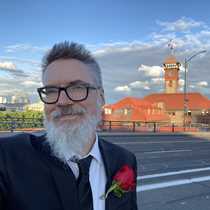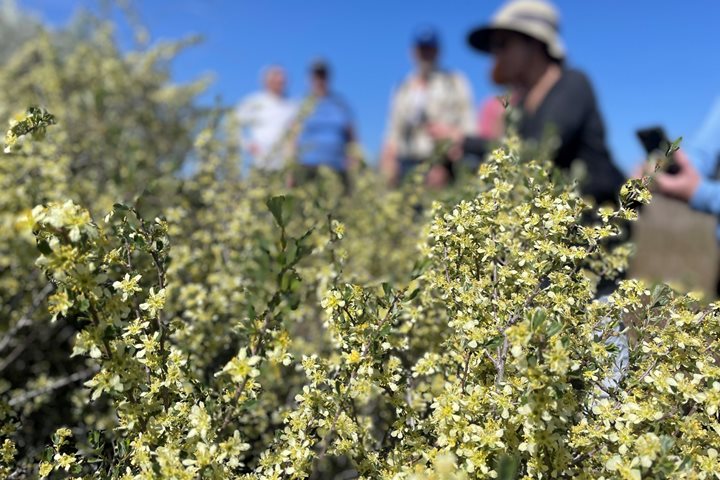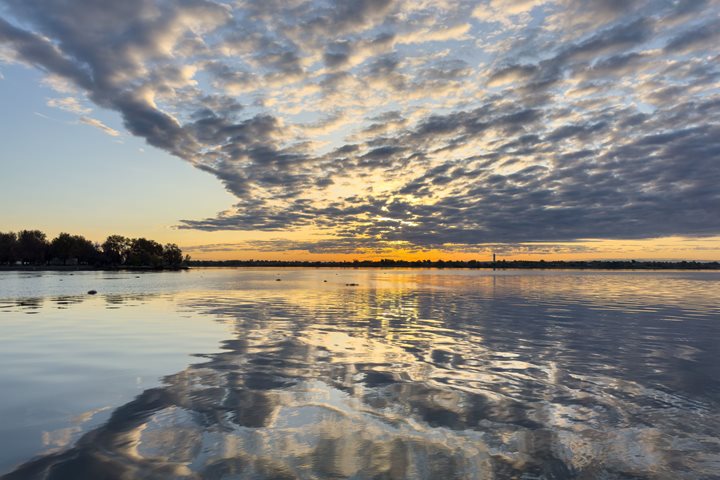The main activity of the day was the jetboat tour on the Snake River, which transported us about 50 miles upriver from Clarkston/Lewiston. Our voyage entered the Hells Canyon National Recreation Area, a scenic space of over 650,000 acres of rugged landscape. While largely defined by characteristic basalt flows like the rest of the Columbia River basin, we also discovered some prime examples of granite, limestone, and island arc basalt formations that were pushed up by much older tectonic action. Wildlife was abundant, and we observed bighorn sheep, mule deer, bald eagles, a golden eagle, and several majestic great blue herons.
The Snake River was treacherous territory for early sternwheeler commerce with a number of ships running up and down the river since the late nineteenth century, and several of these ships meeting a sodden fate in the rapids. At the confluence of the Snake and Salmon Rivers, we witnessed the currents merging in a frothy and churning junction, with various boatloads of charter fisher persons attempting to hook the legendary white sturgeon.
One of the highlights of the journey was the close-up views of Native petroglyphs that we observed from the boats. At Buffalo Eddy, the petroglyphs have a unique style of human-shaped images that display a triangular body and headdresses with horns. These images are singular among human images in the Columbia Plateau, and they date to about 2,500 years ago.
And of course, this is Lewis and Clark country. In the spring of 1806, the rest of the Corps of Discovery was camped along the Clearwater River waiting for the mountain snows to melt so they could continue their journey east over the Bitterroot Mountains. Sgt. Ordway and Privates Robert Frazer and Peter Weise were sent to find some salmon to feed the hungry party. They travelled up the Snake River in search of the fresh fish. Big Cougar Bar, which we visited today, is thought to be the place where they bought fourteen salmon from the Nez Perce. Ordway described a Native longhouse, and a 2007 archeological dig conducted by members of the Idaho Historical Preservation Office at this site matches Ordway’s description.







